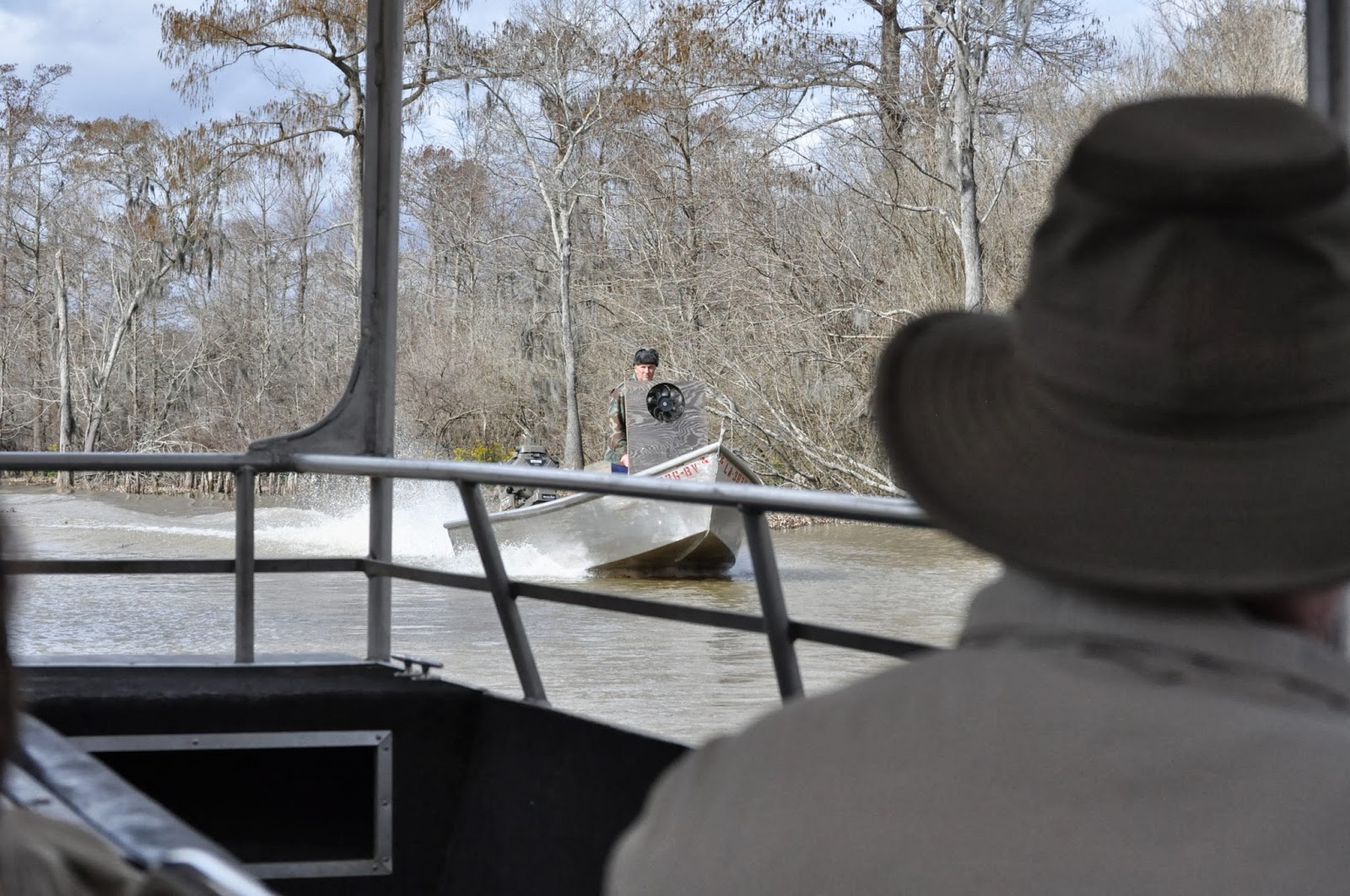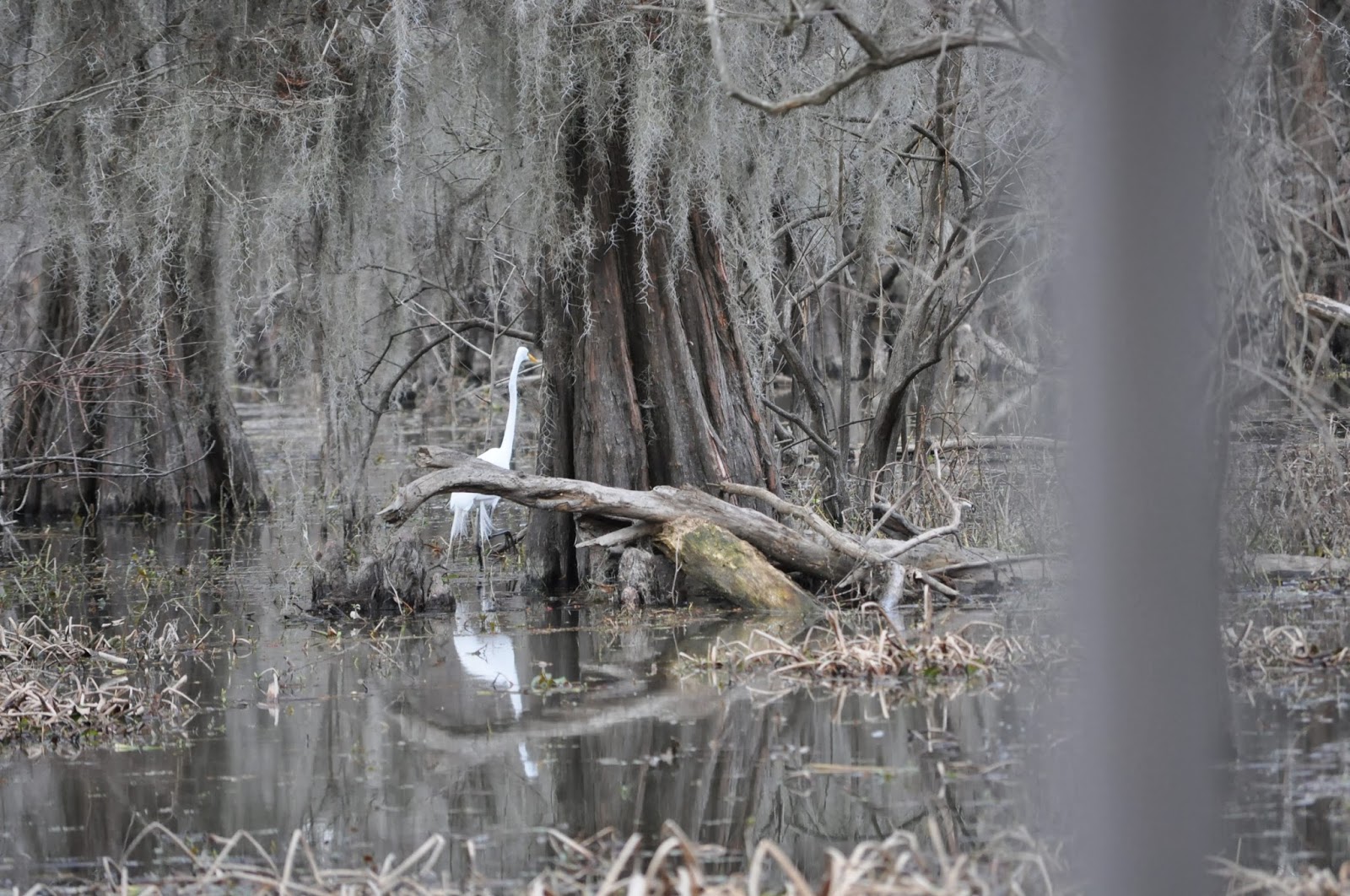 |
| 180 year old live oak |
The tour included 10 tourists traveling via a 25ft aluminum boat. Capt Jack and Dawn provided a lively narrative on area history and cajun culture.
 |
| It was necessary to traverse a lock to enter the Atchafalaya River. |
Most of the trees were cyprus.
We were passed by a number of fishermen working their Cayfish traps.
Although the water too cold with many of the alligators hibernating, we did see one large gator (approx 8ft). The gator was in very shallow water submerging after only a few minutes. There were several homes in the swamp apparently being used on a seasonal basis. Access was only by boat. The houses usually get fresh water by capturing rain water in large tanks. The homes also have a separate building resembling an outhouse were residents place their electric generators.
Note the cypress roots known as knees emerge from the water and eventually grow into adult trees.
A beaver den.
We saw several bald eagles.
We left New Orleans on Friday, Feb 21st.
It was a long drive to Conroe, Texas - more than 6 hours counting lunch and bathroom stops. It was nearly dark by the time we were set up at Conroe's Thousand Trails RVpark. We spent the next day, Saturday, relaxing and doing some local grocery shopping.
Sunday morning, after a Cracker Barrel breakfast, we headed northwest to College Station, Texas (home of Texas A&M). We passed a wagon train enroute.
George Bush was the youngest WWII naval aviator at that time.
George and Barbara Bush with young George W.
The young Bush family purchased a new 1947 Studebaker Champion and then moved to Texas from the George's father's home in Kennibunkport, Maine.
They paid $1675 for the new car with a $150 trade-in for a 1941 Plymouth.
The museum had State dinner table setup with the gown Barbara wore for the reception for the President of Poland, Lech Walesa.
"President" Johnson relaxing in the oval office.
George Bush had springer spaniels named Millie and Ranger.
This was an antique door presented by the Emir of Kuwait in appreciation for the effort against the Iraqis.
The horse sculpture in the courtyard outside the museum is amonument to freedom and commemorates the fall of the Berlin Wall.
We enjoyed the Bush museum and decided to visit George W.s library in Dallas. After some trip planning we left Conroe for Dallas on Feb 25th.
















































